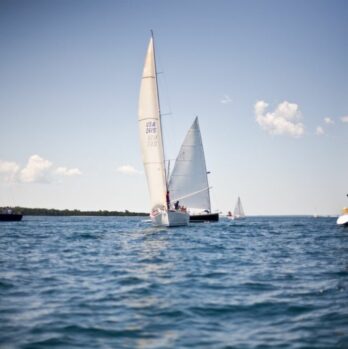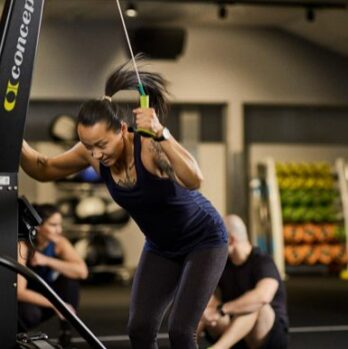Triathlon Distance: A Comprehensive Guide to the Different Types

Introduction
Triathlons have gained immense popularity in recent years, attracting athletes from various backgrounds and skill levels. One of the key factors that differentiates triathlons is the distance involved. In this article, we will provide a detailed overview of triathlon distances, discuss the types that exist, explore their popularity, delve into quantitative measurements, and analyze how these distances differ from one another. We will also take a historical perspective to understand the evolving advantages and disadvantages of different triathlon distances.
Overview of Triathlon Distances

Triathlon is a multisport endurance event that combines swimming, cycling, and running. The distances of each discipline can vary depending on the type of triathlon being undertaken. Typically, a triathlon consists of three continuous and sequential stages, with athletes transitioning from one discipline to another in the fastest possible time.
Comprehensive Presentation of Triathlon Distances
There are several types of triathlon distances, catering to athletes with different abilities and goals. The most common distances include sprint, Olympic, half ironman, and ironman triathlons.
1. Sprint Triathlon [H3]
The sprint triathlon is the shortest distance and serves as an excellent entry point for beginners and those looking to test their fitness levels. It typically involves a 750-meter swim, a 20-kilometer bike ride, and a 5-kilometer run. This distance allows participants to experience the excitement of triathlon without being overly strenuous.
2. Olympic Triathlon [H3]
Often referred to as the standard distance, the Olympic triathlon is the distance featured in the Olympic Games. It comprises a 1.5-kilometer swim, a 40-kilometer bike ride, and a 10-kilometer run. This distance challenges athletes to develop a well-rounded skill set and endurance capabilities.
3. Half Ironman Triathlon [H3]
The half ironman triathlon, also known as the 70.3 triathlon, demands a significant level of commitment and training. Athletes are required to swim 1.9 kilometers, cycle 90 kilometers, and run a half marathon (21.1 kilometers). This distance requires enhanced stamina, endurance, and mental fortitude.
4. Ironman Triathlon [H3]
The ironman triathlon is the pinnacle of endurance events, pushing participants to their limits. It consists of a 3.8-kilometer swim, a 180-kilometer bike ride, and a full marathon (42.2 kilometers) to finish. Successfully completing an ironman triathlon is considered a remarkable achievement and requires months of grueling training.
Quantitative Measurements of Triathlon Distances
To truly understand the magnitude of these triathlon distances, let’s dive into some quantitative measurements.
– Swim Distances: Ranging from 750 meters to 3.8 kilometers, swimmers must demonstrate their ability to navigate open water, often in challenging conditions.
– Bike Distances: Cyclists cover distances of 20 to 180 kilometers, necessitating both strength and endurance.
– Run Distances: Runners face distances from 5 to 42.2 kilometers, challenging their mental and physical resilience.
Differences Between Triathlon Distances
Each triathlon distance presents unique challenges for athletes, requiring different training strategies and skill sets.
1. Time Commitment and Training [H3]
Shorter distances, such as sprints or Olympics, can often be completed with less training time compared to the longer half ironman and ironman distances.
2. Endurance and Stamina [H3]
Half ironman and ironman distances demand a higher level of endurance and stamina, making them more suitable for experienced athletes who have built a solid foundation in multiple disciplines.
3. Psychological Factors [H3]
As the distances increase, athletes must not only overcome physical challenges but also tackle psychological barriers, such as mental fatigue and self-doubt.
Historical Overview of Triathlon Distances
Over the years, the advantages and disadvantages of different triathlon distances have evolved. In the early days of triathlon, shorter distances were prevalent due to their accessibility and appeal to a wider range of participants. However, as the sport grew in popularity, longer distances gained traction, providing a platform for elite athletes to showcase their endurance capabilities.
Conclusion
In conclusion, triathlon distances offer a range of challenges for athletes of all abilities. Whether it’s the intensity of a sprint or the unparalleled demand of an ironman, each distance provides a unique experience. Understanding the differences, advantages, and disadvantages of these distances allows athletes to make informed choices based on their goals and capabilities. So, lace up your shoes, hop on your bike, and dive into the exhilarating world of triathlon.
(Note: Insert a video clip that showcases the excitement and diversity of triathlon races, emphasizing the various distances and the determination of participants.)
Målgruppen är privatpersoner. Tone of voice är formell.











